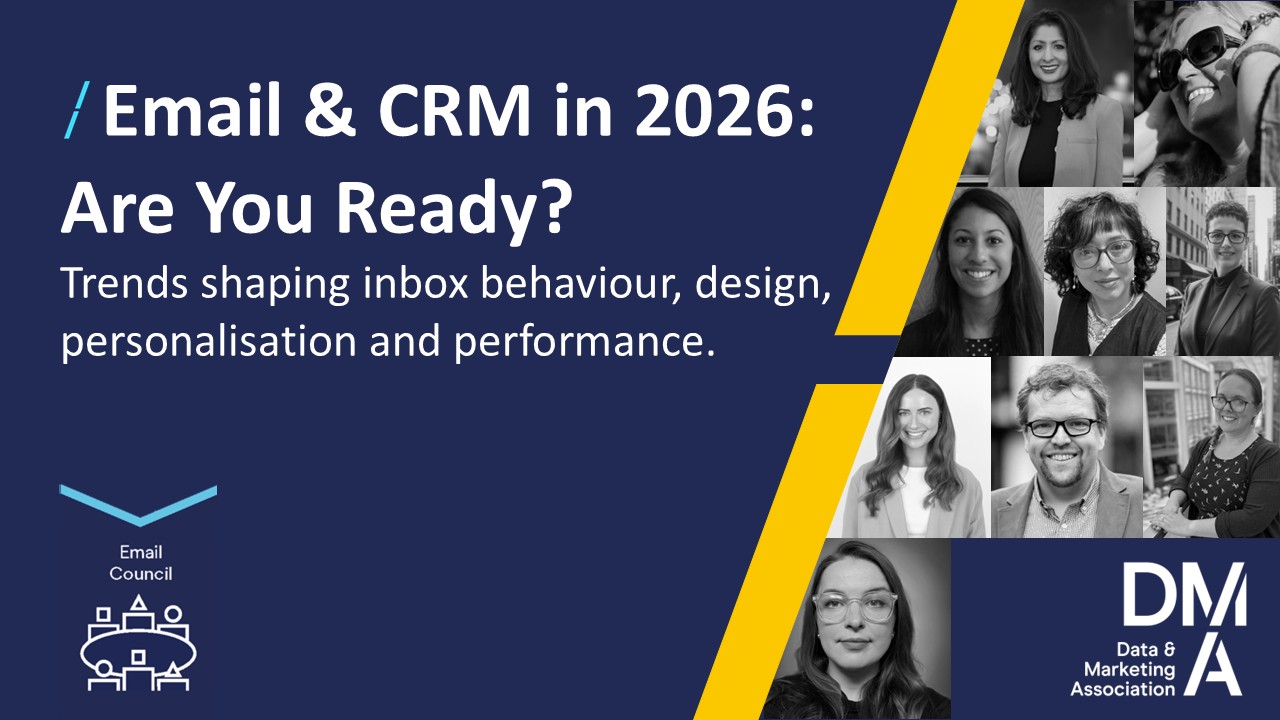The 7 keys to an advanced Email Personalization strategy
11 Apr 2023

Personalization is like the secret sauce of email marketing. It's the perfect ingredient to spice up your email and taste better, but there's a problem. Despite its apparent benefits, marketers aren't using it to the full potential. Why? I think a big part of that is because there's something off in the way we think about personalization. So what's wrong and what can we do about it?
The problem with our current thinking about email personalization… it isn't ONE thing
A lot of marketers use the term Email Personalization as if it is one thing. Asking “Do you personalize your emails?” That isn’t a yes or no question.
Personalization has become an umbrella term. It loosely seems to mean: Whatever you do with data to make your emails more tailored to the recipient. Use of Personalization as a catch-all umbrella term isn't very helpful.
Instead consider that:
* Not every use of Personalization will be (equally) effective - some won't make a difference at all, while others hit it out of the park.
* Personalization tactics can be layered and mixed, using them together. There are multiple techniques.
* There are a lot of nuances to it, making it an area you can develop and show craftsmanship.
Get a deeper understanding of Personalization
Personalization is a powerful tool for marketers, but unless you have fully internalized all the intricacies - you ARE going to miss opportunities. With a deeper understanding. So we are here to dive deeper and think about personalization in a different way.
What data can we use?
Now we know that the umbrella term "email personalization" loosely means: everything you do with data to make your emails more tailored to the recipient, what's underneath that when we look closer?
Here are some examples of data you can use to effectively personalize emails.
1. Insert name, location, customer number in an email.
2. Show recently bought products inside an email.
3. Celebrate milestones or product usage. (like end of year email Spotify sends)
4. Use individual preferences to load dynamic content.
5. Send individual alerts that are personalized.
6. Include content based on specific behavior or lack of behavior
7. Relate connected data - the knowledge graph and show deeper knowledge.
The hard thing about defining Personalization
I see marketers struggle with the definition of personalization all the time, often unknowingly. That is mostly because the term is so closely related to other terms in Email marketing, like segmentation and customization. They look alike. You can imagine people are going to mistake one for the other. And we can’t blame them.
7 keys to an advanced Email Personalization strategy
There are 7 ways and methods to look at email personalization. Personalization is a sliding scale and often there are partial overlaps of these terms:
1. Direct Personalization
Let's call the first stop Direct email personalization, the use of personal, individual, data inside email communication. So we have an email, and we use the personal data to change that email into a personalized email. Like a first name, but there is way more - as you can pretty much use any datapoint.
2. Dynamic content, which is displaying and loading content based on rules
Dynamic content is used to describe content that changes dynamically. This can be based on rules, like if/then/ else, or to show certain content to segments only. At the same time it is describes content that is loaded from external source. Like loading a product description or blog rss feed. The external content can have dispay rules as well.
3. Segmentation, which is thinking in groups.
You create a group based on a data selection and send emails to that group. You can also use dynamic content to show / hide parts of an email, but the starting point with segmentation is the group and not individual.
4. Customization, which is making things custom to an individual
Customization produces a one of a kind product. Think about custom made products. A custom motorcycle like they make on Orange County Choppers, or a custom painting of your pet. A kitchen is customized. There are standard options, but your kitchen has the size, color, handles and equipment, etc that makes a unique combination just for you.
Is that even possible to do in email? Yes, for instance with custom offers, a quote that is made based on a calculation and preferences specific to you. The customer can also “customize an experience”. By picking their own preferences, like for instance choosing their own avatar for their Netflix account. Or a product may be customized to carry your company name.
5. Triggered email, An email that is sent based on action or data.
The act of sending a triggered email, doesn't mean it is personalized per se, even if that sending is informed and based on an individual's data. Because although the timing of triggered email can be individual, the content can still be non-personalized.
For instance a birthday email uses birthdate to trigger the email send. Now if the inside still is a general, non-personalized? Is that email personalized? It does fit under the umbrella term.
6. Generative Personalization, using AI to generate new personalized content
I have written an introduction to Generative Personalization. Because this is so new, there isn't widespread use of it (yet). This is a new process in which you use generative AI to create new, personalized content. Unlike traditional personalization, generative personalization can create entirely new content that is tailored to each individual.
7. The strategic secret sauce
There is a secret sauce ingredient to Personalization. This has to do with the combination of data, related data and how well you are able to translate a datapoint and content into an experience that adds value.
Obviously management philosophy has tought us that you should start with goals and never with what is possible. Want to sell more? Include more personalized offers. While that is great to filter out ineffecte techniques... it doesn't do right to the fact that people want to be heard, excited and personalized content just gets heard better.
So first knowing all the tools and options, and then starting a brainstorm on "what can we do more?" will lead to other, more creative and interesting outcomes. You can see a small sample of that below in "putting detailed personalization to work". There is always time to filter out ideas that wouldn't work later.
Here's why we need a sharper definition of Personalization
You can hear the naysayers coming out of the woodworks with something like ”But Jordie, that is just semantics, no need to go that deep. It is all using data.”
I largely agree. :D Ha, didn't see that one coming, did you!
It isn’t worth discussing semantics until there is something to be learned and there are actions tied to it. And there are actions here.
Marketers have plenty of opinions about data, a lack of opinions isn't the problem. Because we, you and I, both know the devil is in the details.
It makes a lot of difference how you use the data. And there are ways to use a combination of techniques. So you need to be aware of all the techniques and where they can add Value. Putting it under one umbrella of Personalization and leaving it at that, takes away that sophisticated and detailed view.
Putting detailed Personalization to work
Here is a great example of a personalized email from ancestry.com. It already has first name personalization, product customization and a personalized image. The CTA's also lead to their own personalized pages.
Now it is time to expand and brainstorm additional options. Here are some questions to ask to uncover the data you could use:
-
What else do we know about the Family Tree?
-
How many hints are there in total collected for the Family Tree?
-
What can the recipient do based on their newfound Hint or other Tree?
-
Is the email triggered on the event occurring, or is it scheduled?
-
Which type of hints are the most popular?
-
Who submitted the hint?
-
If this is about organisation membership, which organisation?
-
If this is about the location where they lived, which country or location?
-
How closeby or far was this location?
-
What else do we know about this ancestor?
-
Which segments is the recipient in?
-
Did they look at the hint yet? How many hints are unseen?
-
Is she a paying member or not?
There are multiple ways to start. Here is a very practical approach to personalization by Everlytic. It lays out some of the options you have to start personalizing your email marketing. And then divide it into entry-level, mid-level and advanced (difficulty). Because only when data is used, you can improve your results.
It is often easy to see which data is readily available. With that data you can start making variants and do an A/B test. Other data is more difficult to surface, but once you know there is a gap in your data model, you can start collecting the data.
Conclusion
With a deeper and better defined understanding of Personalization, suddenly we have way more options for relevant and engaging messages. So take a moment and inventarize your current data - data model and gaps in there. And start to really personalize your email.





Please login to comment.
Comments